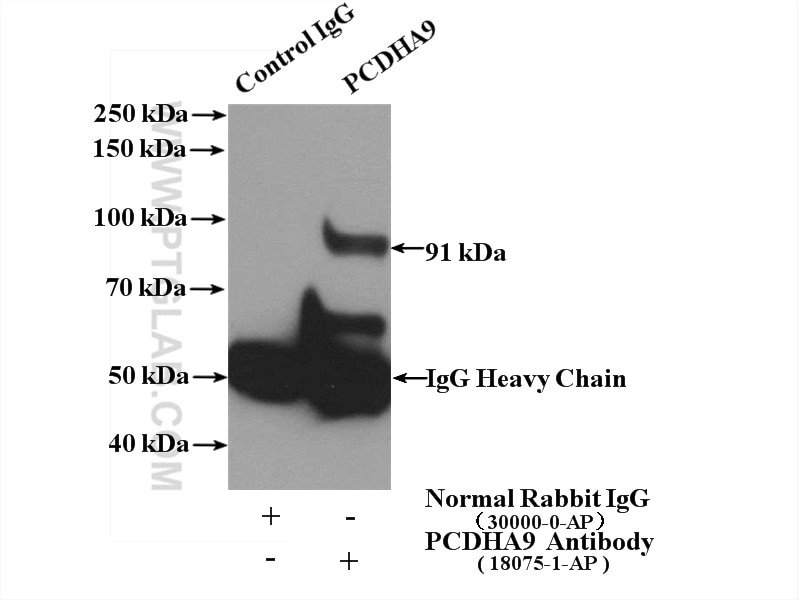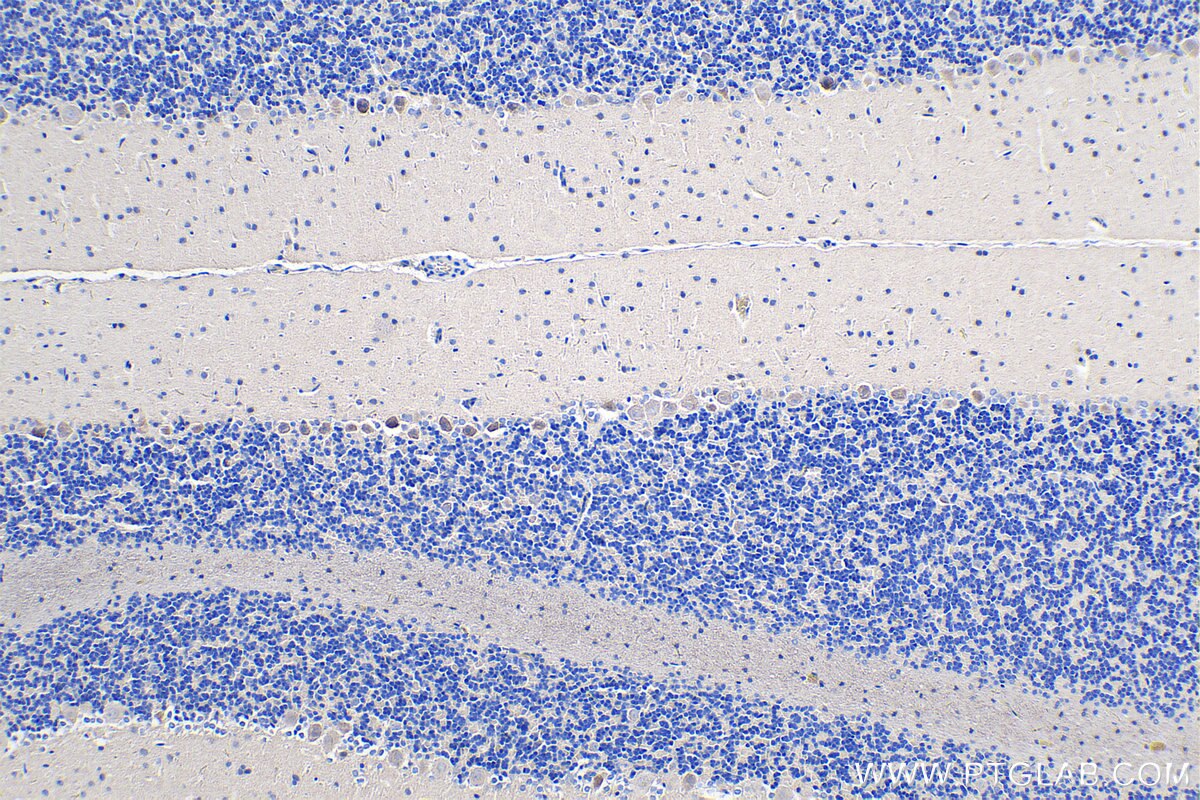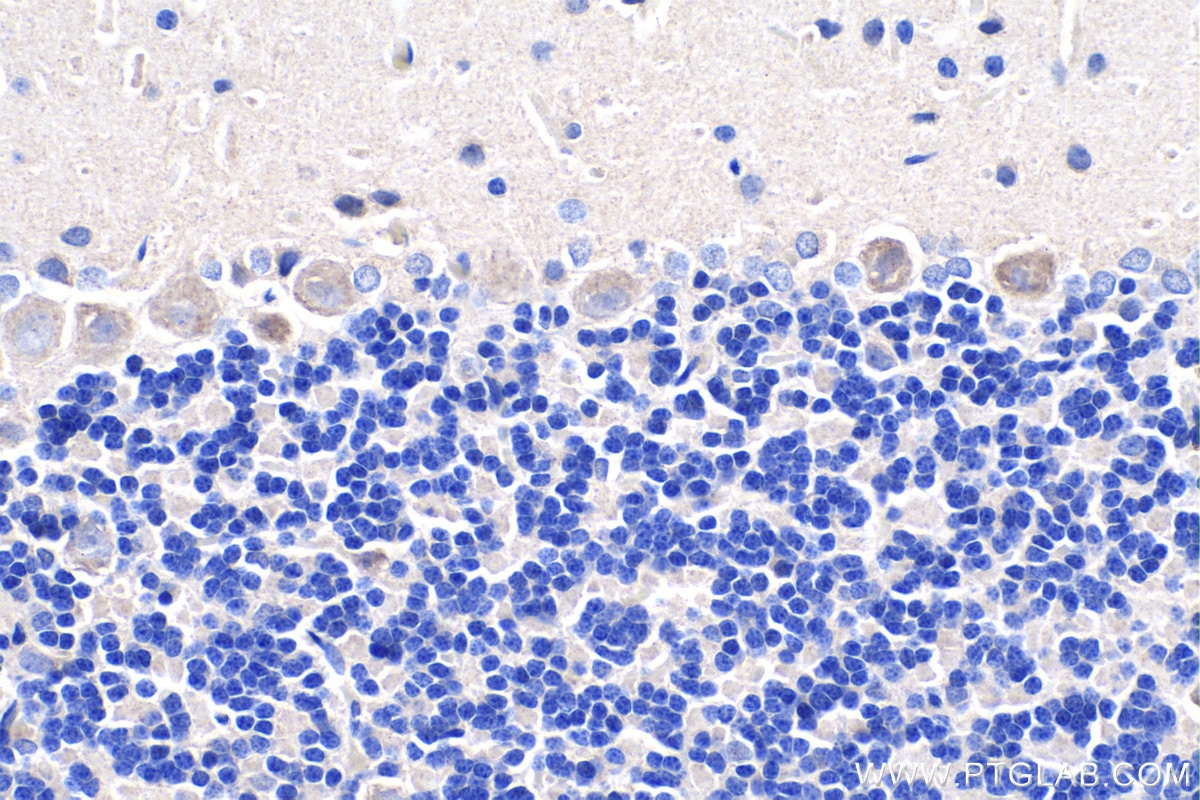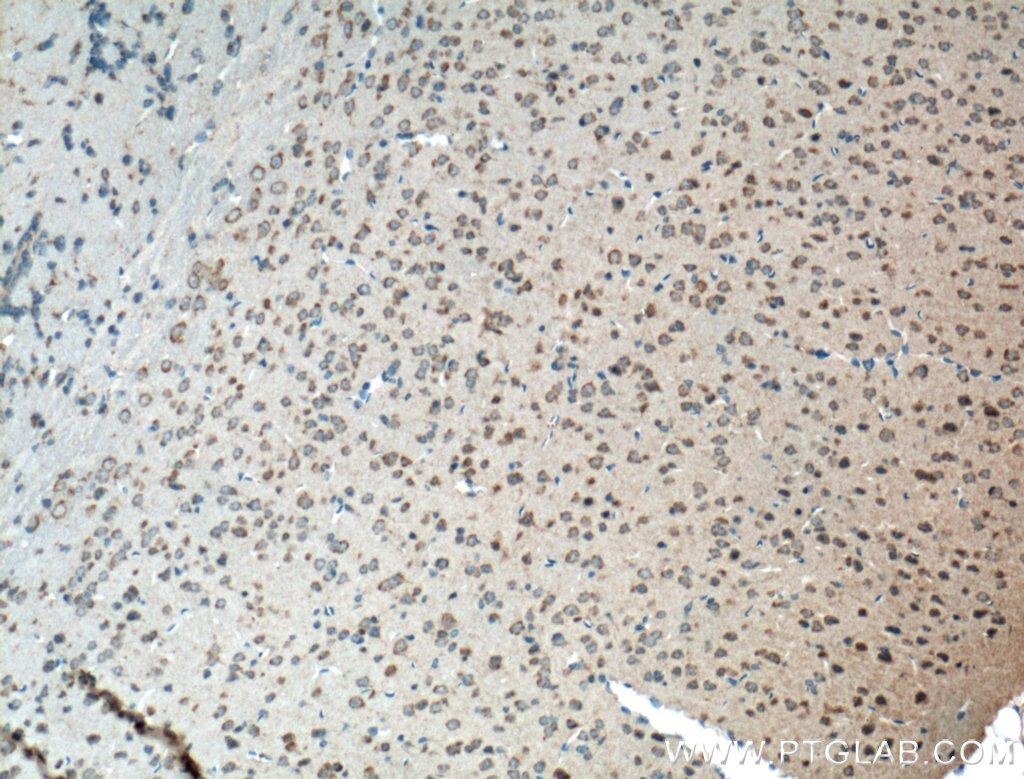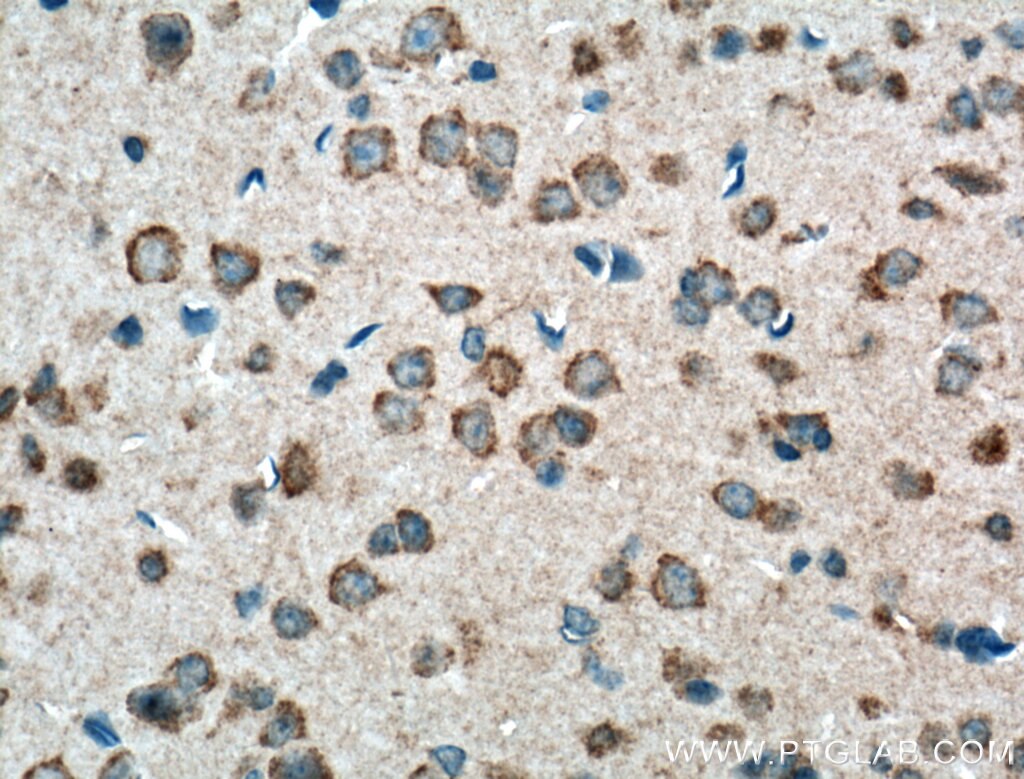- Phare
- Validé par KD/KO
Anticorps Polyclonal de lapin anti-PCDHA9
PCDHA9 Polyclonal Antibody for IP, IHC, ELISA
Hôte / Isotype
Lapin / IgG
Réactivité testée
Humain, rat, souris
Applications
WB, IP, IF, IHC, ELISA
Conjugaison
Non conjugué
N° de cat : 18075-1-AP
Synonymes
Galerie de données de validation
Applications testées
| Résultats positifs en IP | tissu cérébral de souris |
| Résultats positifs en IHC | tissu cérébral de souris, tissu de cervelet de rat il est suggéré de démasquer l'antigène avec un tampon de TE buffer pH 9.0; (*) À défaut, 'le démasquage de l'antigène peut être 'effectué avec un tampon citrate pH 6,0. |
Dilution recommandée
| Application | Dilution |
|---|---|
| Immunoprécipitation (IP) | IP : 0.5-4.0 ug for 1.0-3.0 mg of total protein lysate |
| Immunohistochimie (IHC) | IHC : 1:50-1:500 |
| It is recommended that this reagent should be titrated in each testing system to obtain optimal results. | |
| Sample-dependent, check data in validation data gallery | |
Applications publiées
| KD/KO | See 1 publications below |
| WB | See 2 publications below |
| IF | See 1 publications below |
Informations sur le produit
18075-1-AP cible PCDHA9 dans les applications de WB, IP, IF, IHC, ELISA et montre une réactivité avec des échantillons Humain, rat, souris
| Réactivité | Humain, rat, souris |
| Réactivité citée | Humain, souris |
| Hôte / Isotype | Lapin / IgG |
| Clonalité | Polyclonal |
| Type | Anticorps |
| Immunogène | PCDHA9 Protéine recombinante Ag12767 |
| Nom complet | protocadherin alpha 9 |
| Masse moléculaire calculée | 950 aa, 102 kDa |
| Poids moléculaire observé | 91 kDa |
| Numéro d’acquisition GenBank | BC104802 |
| Symbole du gène | PCDHA9 |
| Identification du gène (NCBI) | 9752 |
| Conjugaison | Non conjugué |
| Forme | Liquide |
| Méthode de purification | Purification par affinité contre l'antigène |
| Tampon de stockage | PBS avec azoture de sodium à 0,02 % et glycérol à 50 % pH 7,3 |
| Conditions de stockage | Stocker à -20°C. Stable pendant un an après l'expédition. L'aliquotage n'est pas nécessaire pour le stockage à -20oC Les 20ul contiennent 0,1% de BSA. |
Informations générales
Protocadherins, which constitute the largest subgroup within the cadherin superfamily, are predominantly expressed in the nervous system and are probably involved in the regulation of neuronal recognition and connectivity (PMID: 17936607; 12231349; 17133224). The protocadherin subfamily can be further subdivided into three groups: the clustered protocadherins, comprising α-, β- and γ-protocadherins; δ-protocadherins; and others, many of which are solitary (PMID: 17133224). PCDHA9 belongs to the α-protocadherin (PCDHA) cluster. A homozygous variant in PCDHA9 has been found in three unrelated Chinese ALS patients, suggesting PCDHA9 as a candidate gene for amyotrophic lateral sclerosis(PMID: 38467605).
Protocole
| Product Specific Protocols | |
|---|---|
| IHC protocol for PCDHA9 antibody 18075-1-AP | Download protocol |
| IP protocol for PCDHA9 antibody 18075-1-AP | Download protocol |
| Standard Protocols | |
|---|---|
| Click here to view our Standard Protocols |
Publications
| Species | Application | Title |
|---|---|---|
Gene Identification of two novel PCDHA9 mutations associated with Hirschsprung's disease.
| ||
